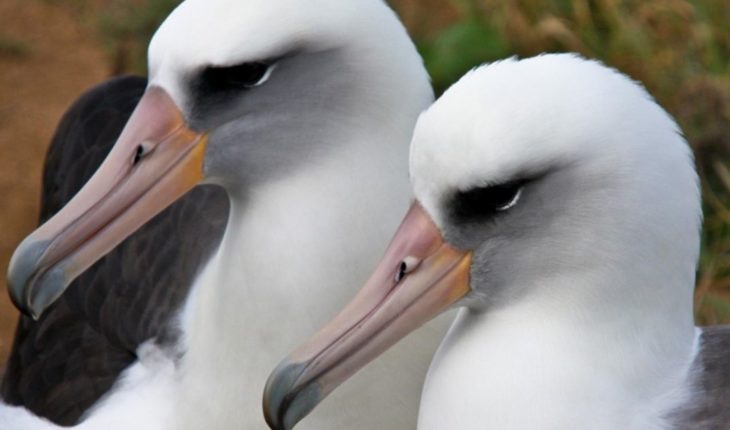in one of the several interventions against equal marriage in the Argentine Parliament in July 2010, the Senator Josefina Meabe, among others, invoked to nature to justify why he opposed that two people from the mism or sex could marry. “I believe in the existence of a natural order that I have felt over years I have lived in the countryside in permanent contact with nature (…). That natural order tells me that not everything is the same: there are differences between a male and a female (…). “A male and a female, which translates into society citizen as a man and a woman” he said there, making gala a supposed wisdom acquired by observation often nature.
Put aside that the Senator was using nature as a great argument to justify something completely unnatural, such as a marriage contract. The important thing is that, despite their falsehood, it is a good example of the fascination which usually arouses the sexual behavior of animals and, in particular, homosexuality. Without entering into a debate already resolved about whether two people of the same sex can or not to marry (“debate”, by the way, absurd: not a single reasonable argument has been proposed to oppose) is valid to wonder: is homosexuality natural? Is it possible to find an evolutionary explanation for this behavior? The evolution of homosexuality homosexuality never ceases to be a theoretical problem for evolutionary biologists and zoologists specialists in animal sexuality, given that it is not easy to explain how operates the natural selection on individuals who appear to not have no particular interest in leaving offspring. It is difficult to know for each species in particular are the evolutionary consequences of the existence of sexual exchanges between individuals of the same sex. The first thing to do is to analyze if these behaviors are defined by the formation of couples for long periods of the life cycle or if they just are part of a repertoire of different sexual interactions. But the truth is that homosexual behaviour is far from being a specifically human trait. It is enough, to prove it, with evoke examples observed in the wild: one of female homosexuality, male homosexuality and other… a little more rare. Animals with homosexual behaviour between the Laysan albatross (Phoebastria inmutabilis), who live in Hawaii and illustrate this note, one of every three nests is formed by pairs of females that groom each other and driven out with ferocity to the males that are they approach them when they are together. Although most often is to put only an egg, can lay two eggs per nest, which are fertilized as a result of fleeting sexual encounters each with males that are not a couple. These “sexual encounters” are somewhat different from what one imagines when they speak of “sexual intercourse”. For starters, most of the species of birds lost penis throughout its evolution (although there are some exceptions, such as ducks and ostriches). Therefore, when a male and a female are, what they do is briefly gather their holes, which are called sewers because urine, sperm, eggs, and fecal matter end there. This process of mating is called “cloacal Kiss”. As it is a mating actually very fleeting, the females of this species does not cost them much get a male that fertilizing them, although they do not have any interest to be partner with him. And it is not, at all, by refusal to monogamy, or promiscuity, or anything like that: some of these females of Laysan albatross couples have been together over 19 years. Homosexuality also appears between the Canadian snakes (Thamnophis sirtalis parietalis), a slightly more complicated way. Males of that species Court and copulate with females and males resembling females, which is called, not too originally, she-males (or, in Spanish, transsexuals). The she-males are heavier than the males, are covered in mud and are much more inactive, but are able to imitate the pheromones of females. All males can pass by the stadium she-male at the beginning of spring in April, prior to mating.
Canadian snakes are a curious case: some males mimic females to wear down his rivals in the battle to leave offspring this behavior is due to mating, males of the species, is very complicated and along that p eriodo are dedicated exclusively to reproduce, are not fed and they must compete with many other males for access to females. The she-males manage to increase their body temperature by the proximity of males who Woo them and reduce the force of these males making them engage in energetically costly mating which, obviously, will not have been breeding. Said more simply: the she-males physically exhausted males to then compete with them, in superiority of conditions, for females that only appear for one day in this binge of male and she-males. But the animal homosexual interactions have been documented in which is the Dolphin bottlenose (Thursiops): have up to forty times more interactions, on average, than females of bonobos, which are considered one of the more hipersexualizadas. Immature males of these dolphins are mounted between them, contact their genitals or contact their faces against the genitals of the other (goosing), and usually it do in groups.
Bottlenose dolphins participating in true orgeys among males this generates two things: reinforce alliances between groups of males, because social hierarchies are established with clarity, and prepares them to perform a courtship and successful mating to When, now adults, are females. There is also sexual contacts between females in this species, but they are less frequent and shorter. In this case, rather than a binge, what is observed is two females that refriegan their bodies (which is known as “petting”). Some explanations of evolutionary hypotheses about homosexual behavior in animals are different. While many are dependent on the context and the particular species is analyzed, others are a bit more general. On the one hand, these interactions may be beneficial for maintaining the stability of the social groups and to reduce stress. They can also serve as route of reconciliation for the resolution of social conflicts showing aggression. He has been observed, moreover, that they have some use for the establishment of necessary social hierarchies for the distribution of scarce resources when the territories are small and high densities of animals. Finally, it seems to work as practice for courtship and intercourse before reaching adulthood. So: what is natural? There is natural? Nature and nature are the same? Nature does an order? Who ordered it? Will natural there be in nature? There it natural for humans? Is there a natural order in animals? Is animal homosexuality natural? There are many questions that remain open. But some can respond. If we consider that, by definition, everything that exists in nature is natural, animal homosexual behaviors are perfectly natural, occur in individuals of more than 500 species and have different functions in the socialization and group life. * Matías Pandolfi is PhD in biological sciences from the Faculty of exact sciences and natural (FCEN) of the University of Buenos Aires (2005) and completed his postdoctoral studies at the University of California, Los Angeles (2005-2007). It is an independent researcher of Conicet and Adjunct Professor of the faculty, where he founded and directs the laboratory of Neurobiology and behavior and dictates the course of Social biology and Reproductiva.En this note:





